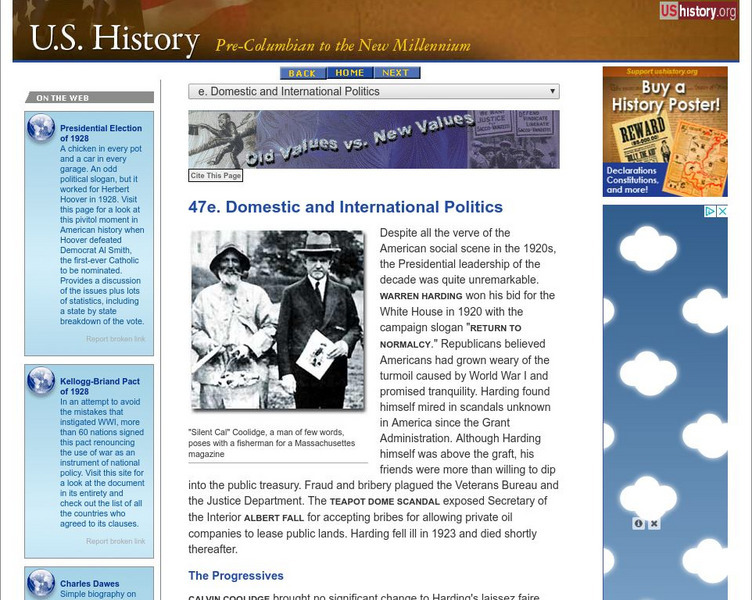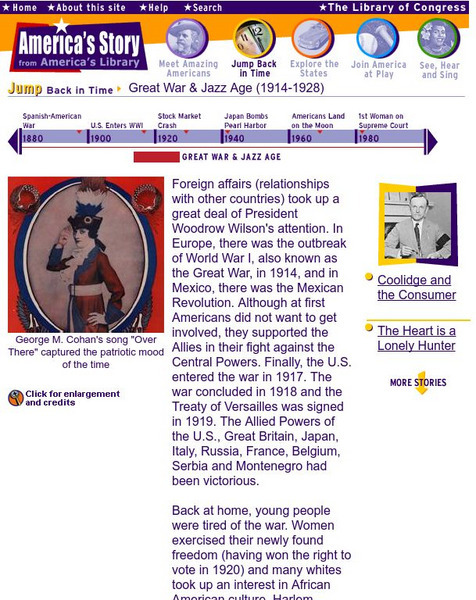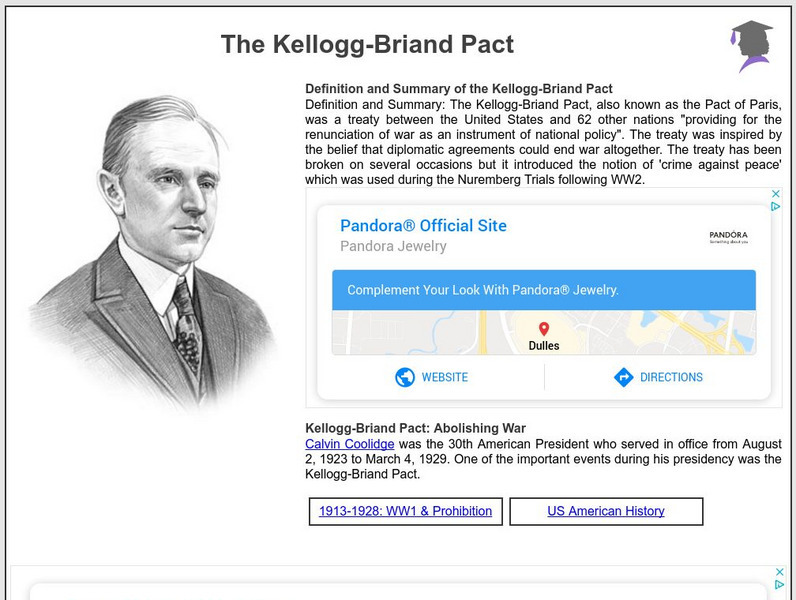Hi, what do you want to do?
Library of Congress
Loc: "I Do Solemnly Swear"
An online exhibit of historically pertinent items dealing with the inauguration of a number of US Presidents.
Independence Hall Association
U.s. History: Domestic and International Politics
Read about the politics, both domestic and international, of the three presidents in the 1920s. Domestic scandals and attempts to patch international problems stood out in this decade.
American Presidency Project
American Presidency Project: 1920 Presidential Election
View a map and chart showing the distribution of votes by Democrats and Republicans in the 1920 presidential election. See which states supported Warren G. Harding and which supported James Cox.
Country Studies US
Country Studies: The Booming 1920s
A good overview of the policies of the Republican administrations in the 1920s that promoted favorable conditions for U.S. industry. Read about how these policies were a disaster for the farm economy.
Library of Congress
Loc: America's Story: Great War & Jazz Age (1914 1928)
This Library of Congress time-line series surveys World War I and the Jazz Age. When World War I broke out in Europe, many changes were going on in the United States. Women were voting for the first time and African-American culture was...
Digital History
Digital History: Conservative Policies and Presidents [Pdf]
Starting in 1920 the United States had three presidents who followed conservative policies. Read about their policies, and determine whether they made the U.S. a more economically sound country. [pdf]
A&E Television
History.com: Dreaming of a White (House) Christmas: 17 Photos
Christmas at the first residence has evolved from an understated, intimate affair in 1800 to an all-out media event.
Digital History
Digital History: The Democratic Convention of 1924
The representatives to the Democratic Convention in 1924 were diverse and devisive. Read about how groups holding totally opposite beliefs attempted to select a candidate to run against Calvin Coolidge. Read about the results of the...
US Government Publishing Office
U.s. Government Publishing Office: Golden Age to the Great Depression
Document from the Senate Agricultural Committee explores acts and laws from 1900s through to 1929 that traced Progressivism in the treatment of agriculture in the early part of the century to problems that resulted in the farm crisis at...
Siteseen
Siteseen: American Historama: The Kellogg Briand Pact
A comprehensive overview with interesting facts and information on the 1928 Kellogg-Briand Pact that aimed to abolish war.
Curated OER
Wikipedia: National Historic Landmarks in Illinois: Charles G. Dawes House
Home of Charles Gates Dawes, Nobel Peace Prize recipient and Vice President to Calvin Coolidge.
Curated OER
Wikipedia: National Historic Landmarks in Missouri: Liberty Memorial
This building of this memorial started with a group of about 40 citizens, a Memorial Association led by Robert A. Long, and a dedication to build a memorial to the fallen soldiers of WW I. With funding secured (a massive fund raising...











